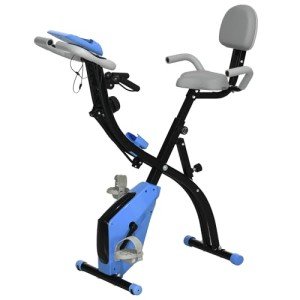Stationary Cycle for Exercise: A Comprehensive Overview
The stationary cycle, typically referred to as an exercise bike, has emerged as a favored device amongst fitness enthusiasts due to its adaptability, efficiency, and ease of usage. This short article delves into the various advantages of making use of a stationary cycle for exercise, the different types offered, pointers for effective workouts, and answers to regularly asked concerns.
Benefits of Using a Stationary Cycle
Exercise bikes provide a plethora of advantages, making them an excellent addition to any fitness routine. Here are some of the crucial advantages:
1. Cardiovascular Health
Cycling on a stationary bicycle is an outstanding way to reinforce the heart and boost total cardiovascular health. Regular usage can result in enhanced heart rate, increased lung capability, and much better blood flow.
2. Weight Management
For people seeking to shed pounds or preserve a healthy weight, a stationary cycle provides an efficient means of burning calories. Depending on the strength of the workout, cycling can burn anywhere from 400 to 600 calories per hour.
3. Low-Impact Exercise
Unlike many kinds of cardio, cycling locations very little stress on the joints. This makes stationary cycling a perfect workout for individuals with joint concerns, injuries, or conditions such as arthritis.
4. Varied Workouts
With the intro of sophisticated stationary bikes featuring programmable workouts, users can now take pleasure in a wide variety of training choices. From high-intensity period training (HIIT) to steady-state endurance rides, stationary cycling can keep users engaged and challenged.
5. Convenience
Stationary cycles allow individuals to work out from the comfort of their homes, getting rid of the need to travel to a gym. This ease of access can promote consistency in exercises, which is vital for accomplishing fitness goals.
6. Improved Muscle Tone
Routine usage of a stationary cycle can improve muscle strength and tone, particularly in the lower body. It mostly engages the quadriceps, hamstrings, calves, and glutes while likewise engaging the core and lower back muscles for stability.
Kinds Of Stationary Cycles
When thinking about a stationary cycle for exercise, it's necessary to comprehend the alternatives readily available in the market. Here are the primary kinds of stationary bikes:
1. Upright Bikes
Upright bikes resemble traditional bicycles and offer an efficient cardiovascular workout while engaging the core and upper body.
2. Recumbent Bikes
Recumbent bikes have a larger seat and back assistance, allowing riders to sit in a more relaxed position. This style is particularly advantageous for those with neck and back pain or those recovering from injury.
3. Spin Bikes
Constructed for high-intensity exercises, spin bikes are commonly utilized in cycling classes. They usually have a heavier flywheel and permit for standing pedaling, which assists in a robust training experience.
4. Dual-Action Bikes
These models incorporate moving handlebars, permitting users to engage the upper body while cycling. This can enhance calorie burn and supply a full-body workout.
Tips for Effective Workouts
1. Change Properly
Make sure the stationary cycle is properly adjusted for your height and leg length. The seat ought to be at hip level, and your knees must not extend beyond your toes when pedaling.
2. Warm-Up and Cool Down
Before starting your workout, take time to heat up your muscles with a 5-10 minute simple pedaling session. Also, cool off later to prevent tightness and promote recovery.
3. Incorporate Interval Training
Alternate between high-intensity and low-intensity sections to make the most of calorie burn and enhance cardiovascular fitness. For Gym Bike For Sale , pedal at optimal effort for 1 minute, then recuperate at a slower speed for 2 minutes.
4. Stay Hydrated
It's crucial to drink water before, during, and after your workout, particularly for high-intensity sessions. Dehydration can lead to tiredness and hinder efficiency.
5. Listen to Your Body
Pay attention to how your body reacts throughout workouts. If Exercise Bike Sale experience pain or pain, modify the intensity or take a break.
Often Asked Questions (FAQs)
1. How typically should I use a stationary cycle?
For optimal results, aim for a minimum of 150 minutes of moderate-intensity aerobic activity weekly. This translates to about 30 minutes on the bike, five times a week.
2. Can I drop weight using a stationary cycle?
Yes, stationary cycling can be an effective tool for weight-loss, provided it is combined with a balanced diet. The calorie burn from cycling can contribute significantly to shedding excess weight.
3. Is cycling on a stationary bicycle great for newbies?
Definitely! Stationary cycling is available for people at all fitness levels. Beginners can start at their own pace and slowly increase strength as fitness improves.
4. What should I wear while cycling?
Use comfortable, moisture-wicking clothing and supportive athletic shoes. Cushioned shorts can likewise enhance comfort throughout longer sessions.
5. Are there any health risks connected to stationary cycling?
While cycling is low-impact, it's crucial for people with particular health conditions to speak with a health care provider before beginning any brand-new exercise program. Appropriate modifications to the bike can likewise assist prevent pain or injuries.
The stationary cycle offers an efficient and flexible choice for those aiming to improve their fitness levels while enjoying a low-impact workout. With different types readily available to accommodate various fitness preferences and needs, together with the plentiful advantages it uses, integrating a stationary bike into one's regimen can cause improved cardiovascular health, weight management, and total fitness. Whether one chooses a casual trip or an extreme session, the stationary cycle is a tool that can help anybody achieve their fitness objectives.

